1.3 - CompTIA A+ Core 2
1.3a - An Overview of Windows: Professor Messer
Windows 10 editions
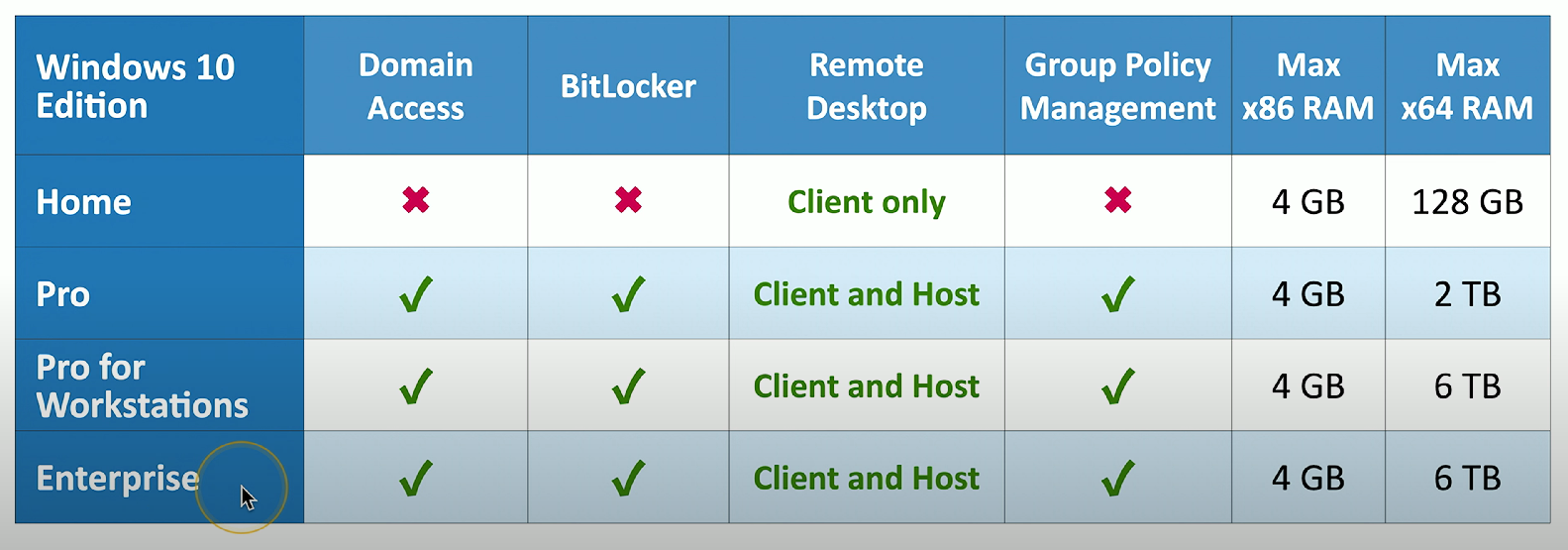
Home

Windows 10 Home: Windows version designed for end-users. Includes OneDrive/Microsoft account integration, Cortana, and Windows Defender.
Pro
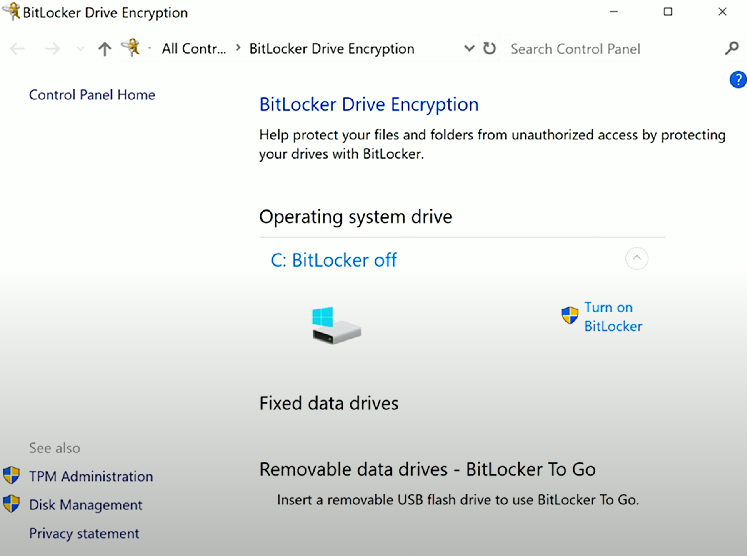
Windows 10 Pro: Windows version designed for business/enterprise use. Includes standard Home features, along with RDP capabilities, full disk encryption (FDE) via BitLocker, and Group Policy Management for creating Windows domains.
Pro for Workstations

Windows 10 Pro for Workstations: Windows version designed for high-end desktops (up to 4 CPUs), and includes 2TB of RAM, ReFS (Resilient File System) support.
Enterprise
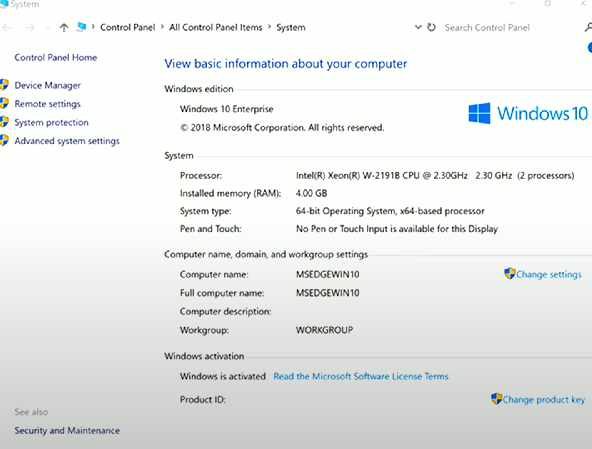
Windows 10 Enterprise: Windows version designed for very large organizations. Includes volume licensing, AppLocker (controls what applications run/desktop application management), BranchCache (caches files remotely instead of over a WAN), and granular UX control to control what Windows 10 features end users can view.
Windows 11 editions
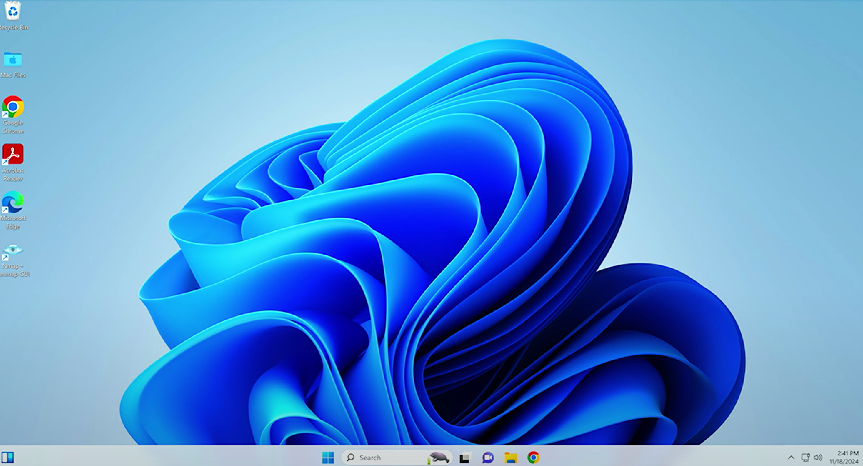
Released on October 5, 2021, as an upgrade to Windows 10.
No support for 32-bit/x86 CPUs.
Includes a New Start menu and new taskbar widgets
Integrates Microsoft Teams
Includes touch-based integration
Includes Windows Copilot (AI assistant).
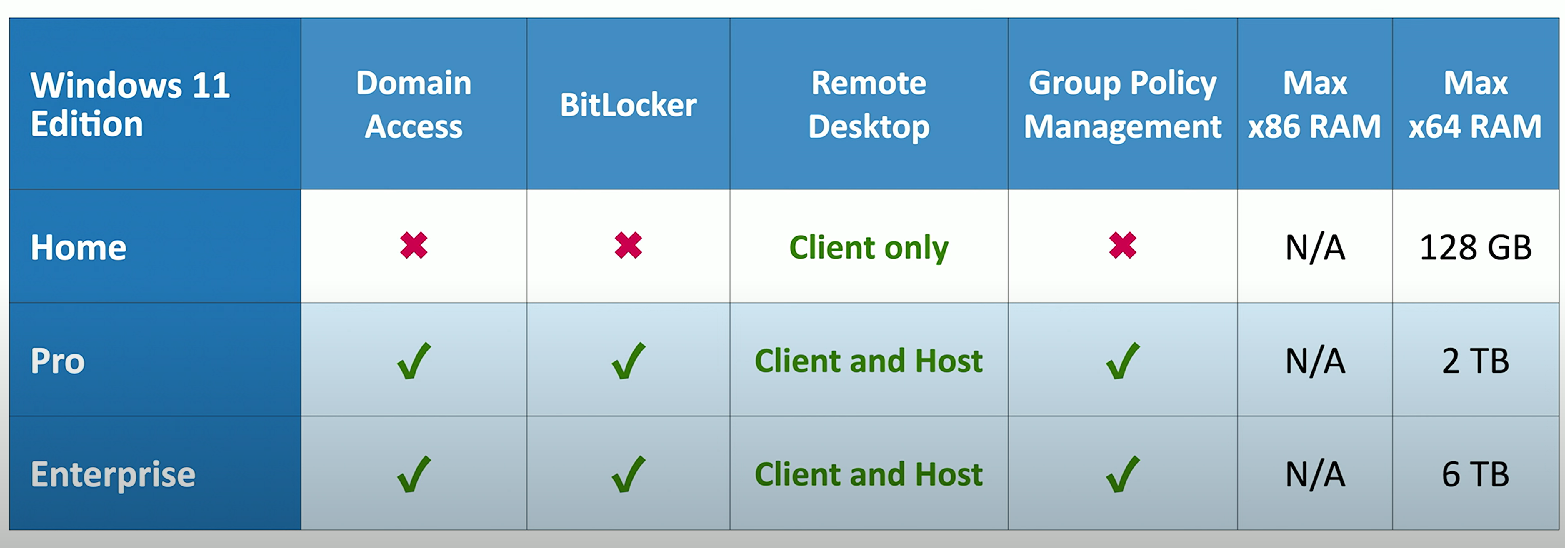
Home
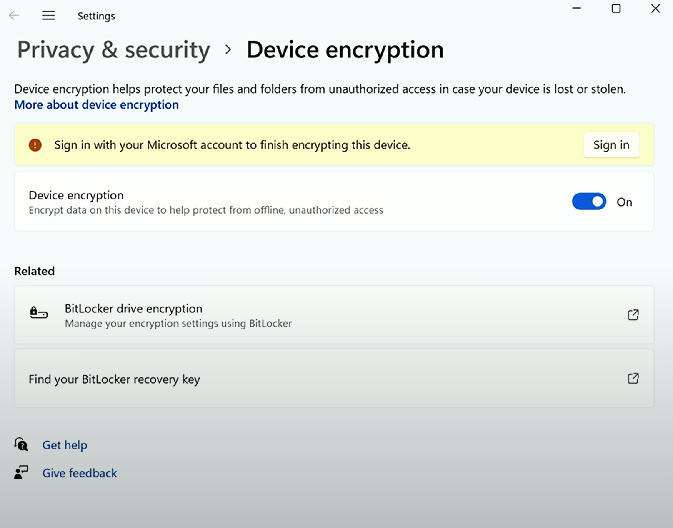
Windows 11 Home: Windows 11 version designed for end-users. Includes OneDrive/Microsoft account integration, Cortana, and Windows Defender, and includes a consumer version of FDE (via BitLocker). BitLocker recovery information is stored in the user’s Microsoft Account.
Pro
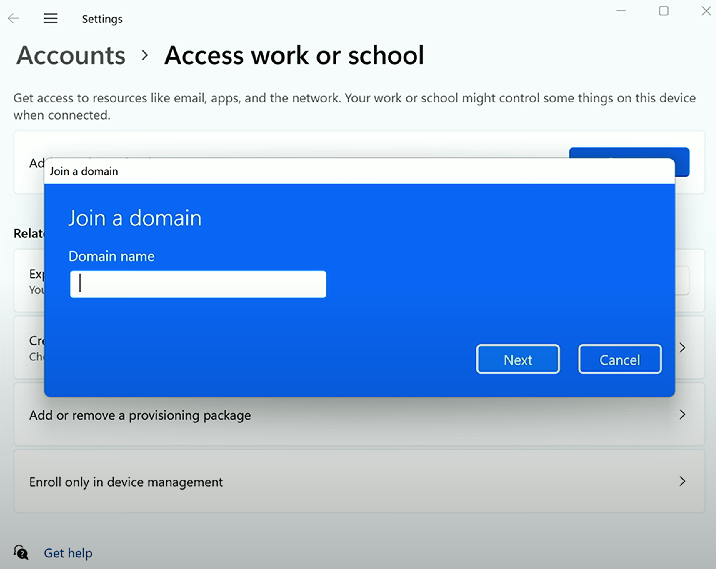
Windows 11 Pro: Windows 11 version designed for business use. Integrates with Active Directory, uses full disk encryption via BitLocker, supports RDP, and integrates virtualization via Microsoft Hyper-V.
Enterprise

Windows 11 Enterprise: Windows 11 version used for very large company deployments. Includes volume licensing, server features, mobile device management (MDM), mobile application management (MAM), and ReFS support.
N versions
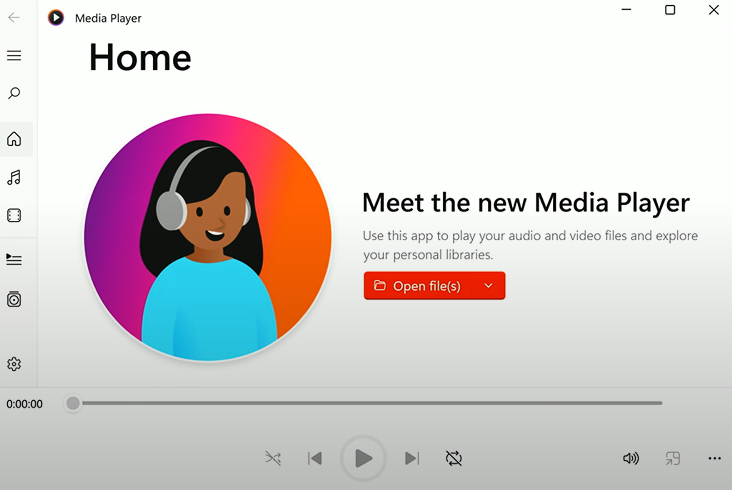
Windows editions for Europe - results of antitrust investigations by the European Commission
N = Not with Windows Media Player or other Windows multimedia utilities.
Multimedia features can be added via the Media Feature Pack for N edition
Settings → Apps → Optional features → Add an optional feature → Media Feature Pack
1.3b - Windows Features: Professor Messer
Feature differences
Domain vs. workgroup
Windows workgroups: Each individual device on a network is managed as a standalone system - every device is a peer. Used for home networks.
Windows domains (Active Directory): Use a centralized server for authentication, administration, and device access. Supports thousands of devices over many networks.
Desktop styles/user interface
Work desktops: Standardized UI with limited customization and features (e.g., not being able to install/remove applications). Relevant files are likely kept in the same place.
Home desktops: Flexible UI - can be customized to meet user preferences (e.g., background photos, colors, text sizing).
Availability of Remote Desktop Protocol (RDP)

Remote Desktop Protocol: Allows a client to connect/interact with a remote RDP host.
RDP client: Software that connects to an RDP service - available for almost any operating system.
RDP host: A server or computer that is running the RDP service, enabling multiple users to access the system's resources remotely.
Remote Desktop Service: Allows the RDP client access to the RDP host - available in Windows 10 and 11 Pro/Enterprise.
Random-access memory (RAM) supports limitations
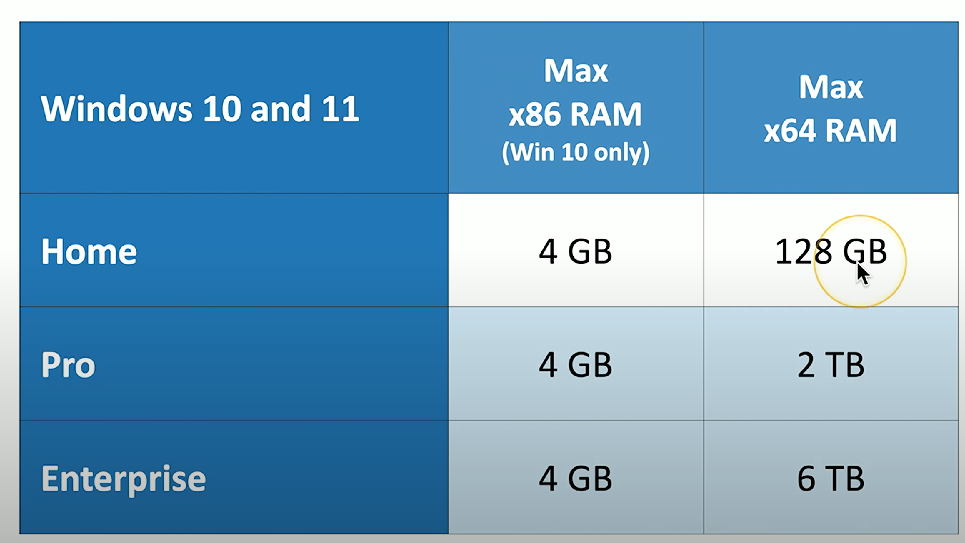
Windows 10 Home: 4GB (x86 CPUs), 128GB (x64 CPUs)
Windows 10 Pro: 4GB (x86 CPUs), 2TB (x64 CPUs)
Windows 10 Enterprise: 4GB (x86 CPUs), 6TB (x64 CPUs)
Windows 11 Home: 128GB (x64 only)
Windows 11 Pro: 2TB (x64 only)
Windows 11 Enterprise: 6TB (x64 only)
BitLocker/EFS
Both BitLocker and EFS provide confidentiality for important data.
Encrypting File System (EFS): Allows encryption for individual files and folders - built into the NTFS file system.
BitLocker: Windows feature that enables full disk encryption (FDE) - everything on the drive is encrypted, including the OS. Available for all Windows editions.
gpedit.msc
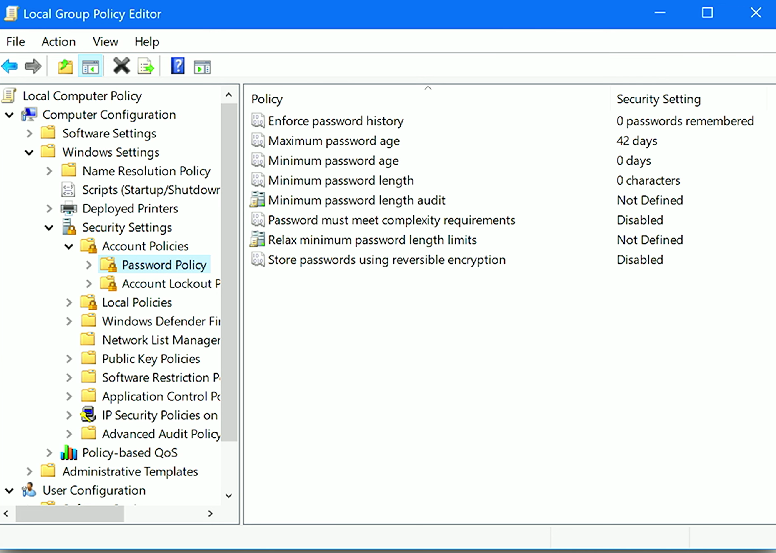
gpedit.msc(Group Policy Editor): A Windows utility used to edit the local group policy for the OS.gpmc.msc(Group Policy Management Console): A Windows utility integrated with Active Directory - used for business/enterprise GPO management.